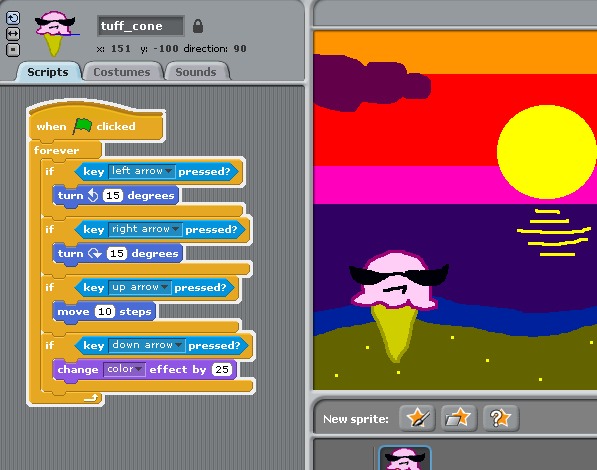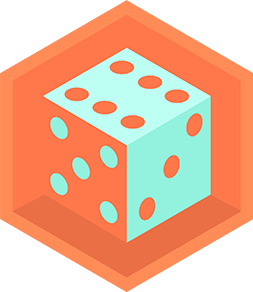Create a graphical videogame
Design and build a simple graphical video game using Scratch or similar, creating sprites, backgrounds, and rules, then test and share it with friends.



Step-by-step guide to create a graphical video game
Learn Unity - Beginner's Game Development Tutorial
Step 1
Pick a simple game idea and one clear goal like "collect stars" or "avoid enemies."
Step 2
Draw a quick sketch of the player the background and one rule on your paper.
Step 3
Open Scratch or a similar block-based editor and start a new project.
Step 4
Use the backdrop editor to make or choose a background for your game.
Step 5
Create or pick a main player sprite from the library or draw your own.
Step 6
Add movement scripts so the player can move with arrow keys or WASD keys.
Step 7
Create another sprite to be an enemy or a collectible item.
Step 8
Add scripts so the enemy or collectible moves or appears where you want it.
Step 9
Make a score variable for the player in the Variables section.
Step 10
Add code so the score changes when the player touches a collectible or loses points when hit.
Step 11
Add at least one sound effect that plays when the player collects or gets hit.
Step 12
Add a start message and a game-over or win message using broadcast or say blocks.
Step 13
Click the green flag and play your game two times to look for problems or fun tweaks.
Step 14
Fix at least one problem you found during testing.
Step 15
Share your finished creation on DIY.org
Final steps
You're almost there! Complete all the steps, bring your creation to life, post it, and conquer the challenge!


Help!?
What can we use if Scratch or a block-based editor is hard to get or install?
If Scratch isn't available you can use Scratch Desktop, Microsoft MakeCode, Tynker, or instead draw the player and background on paper or a paint app and import those images into any block editor as your backdrop and sprites.
The score doesn't change when the player touches a collectible—what should we check?
Check that your collectible and player sprites are the correct size and positioned so the 'if touching [collectible]' block inside a forever loop runs, and confirm the score variable change block is attached to that condition.
How can we adapt the project for younger or older kids?
For younger kids simplify steps 5–8 to one large movable player and a single collectible with a big sound effect and easy win message, while older kids can add enemy AI, multiple levels, extra variables like lives and timers, and more complex scripts.
What are simple ways to extend or personalize the game after the basic version works?
Personalize art in the backdrop editor and sprite costumes, add power-up sprites that modify the score variable, use broadcast blocks to create level transitions or menus, and record custom sounds before sharing on DIY.org.
Watch videos on how to create a graphical video game
How to Make a Video Game! The complete beginners guide to Game Development.
Facts about game design and coding for kids
🧩 A sprite is a 2D image or character you can program to move, animate, and interact in a game.
🕹️ Many famous indie games began as tiny prototypes—Minecraft started as a small solo project that grew into a global hit.
🧪 Playtesting (having friends try your game) is a key step designers use to find bugs and make gameplay more fun.
🎮 Scratch was created at the MIT Media Lab in 2007 to help kids learn programming with colorful code blocks.
🌐 Scratch's online community hosts millions of shared projects you can view, remix, and learn from.
How do I design and build a simple graphical video game with Scratch?
What materials and tools do I need to make a simple graphical video game?
What ages is designing a basic graphical video game with Scratch suitable for?
How can I keep my child safe when they create and share their Scratch games online?


One subscription, many ways to play and learn.
Only $6.99 after trial. No credit card required



